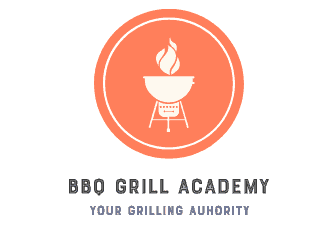Cold smoking is a technique that adds a unique and tantalizing flavor to a variety of foods. Understanding how to cold smoke is a valuable skill that can take your culinary creations to the next level. In this guide, we will explore the ins and outs of cold smoking, from the equipment you need to the step-by-step process. So, let’s dive in!
What is Cold Smoking?
Cold smoking is a method of flavoring food by exposing it to smoke at temperatures below 100°F (38°C). Unlike hot smoking, which cooks the food as it smokes, cold smoking imparts flavor without significantly raising the temperature. This technique is commonly used to enhance the taste of cheese, fish, meat, and even vegetables.
Step-by-Step Guide on How to Cold Smoke
Now, let’s walk through the step-by-step process of cold smoking:
Step 1: Preparing the Food
Before you begin smoking, prepare the food by curing or marinating it as desired. This step helps enhance the flavor and preserve the food during the smoking process. For example, you can marinate salmon in a mixture of soy sauce, brown sugar, and spices for a delightful taste.
Step 2: Preparing the Smoker
Ensure your smoker is clean and ready for use. Add a handful of wood chips or pellets to the smoker box following the manufacturer’s instructions. Preheat the smoker to the desired temperature. Remember, the aim is to keep the temperature below 100°F (38°C) throughout the smoking process.
This is also the time to pick your favorite smoking wood flavor. There are woods that pair well with fish and other woods better for cheeses and proteins.
Step 3: Arranging the Food
Place the cured or marinated food on the racks or hang them using hooks inside the smoker. Make sure there is enough space between the items for proper smoke circulation.
Step 4: Cold Smoking Process
Once the food is arranged, it’s time to start the cold smoking process. Close the smoker and allow the smoke to circulate continuously for several hours. The duration of smoking depends on the type of food and the intensity of flavor you desire. Ideally, it can take anywhere from 1 to 12 hours.
Step 5: Monitoring the Temperature
Regularly monitor the internal temperature of the smoker to ensure it remains within the desired range. You can monitor the food and grill ambient temperature very easily using a grill-ready thermometer. Adjust the vents and airflow if needed to maintain a consistent temperature. Remember, the key is to keep it below 100°F (38°C) to avoid cooking the food.
Step 6: Finishing Touches
Once the desired smoking time has elapsed, remove the food from the smoker. Let it cool down before storing it or using it in your culinary creations. Cold-smoked food pairs exceptionally well with crackers, bread, or as an ingredient in various dishes.
The Equipment You’ll Need For Cold Smoking
To get started with cold smoking, you’ll need the following essential equipment:
- Smoker: Choose a smoker that you feel comfortable using and allows you to control the temperature and airflow. Some popular options include the Weber Smokey Mountain Cooker and the Big Green Egg. Pellet smokers are great for cold smoking because they work just like the oven in your kitchen. Set the temperature and the grill does all the work.
- Wood Chips or Pellets: Select high-quality wood chips or pellets, such as apple, cherry, or hickory, to create the desired flavor profile.
- Racks or Hooks: Depending on the type of food you’re smoking, you’ll need either racks or hooks to hold and arrange the items.
- Thermometer: Use a reliable thermometer to monitor the internal temperature of the smoker and ensure it stays within the ideal range.
Safety Tips for Cold Smoking
While cold smoking is a fantastic way to enhance flavors, it’s important to prioritize safety. Here are a few tips to keep in mind:
- Food Safety: As a Food Safety Manager is important I remind you to ensure that the food you are working with is fresh, properly cleaned, and stored at the correct temperature.
- Proper Ventilation: Always set up your smoker in a well-ventilated area, preferably outdoors, to prevent the smoke from accumulating.
- Control Temperature: Continuously monitor and regulate the temperature inside the smoker to prevent bacterial growth and ensure food safety.
- Practicing Patience: Cold smoking is a slow and gradual process. Avoid rushing it to achieve the best results. Remember, good things come to those who wait!
Conclusion
Now that you have a comprehensive understanding of how to cold smoke, it’s time to put your newfound knowledge into practice. Experiment with different wood flavors, food combinations, and smoking durations to create mouthwatering dishes that will impress your family and friends. Happy cold smoking!




